Celebration of 100th Anniversary of Yenching University and Ribbon Cutting for the John Leighton Stuart Room
Distinguished alumni, their relatives, and friends gathered at SCPKU on October 8, 2019 to celebrate the 100th Anniversary of Yenching University, which until 1952 operated on the current site of Peking University. We were honored by the attendance of so many illustrious guests, including Isabel Crook, recent recipient of the Medal of Friendship awarded by President XI Jinping; He Liliang, a senior diplomat and wife of Yenching graduate, Huang Hua (former vice chairman of National People’s Congress); and Wei Mingyi, an alumnus of Yenching University and former president of the CITIC Group.
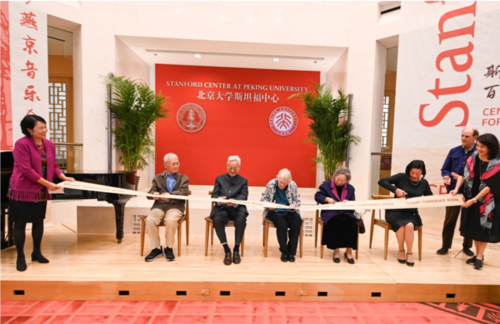
Xu Wan, Han Jialin, Wei Mingyi, Isabel Crook, He Liliang, Jean Oi, Michael Crook, Xu Lian cutting the ribbon for the Stuart Room
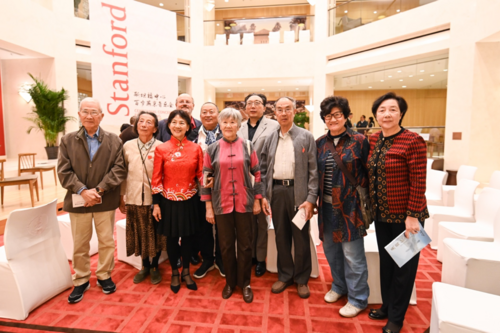
Front row: Children and friends of famous Yenching faculty. Back row: Carl Crook, artists Zhu Cheng and Li Bin.
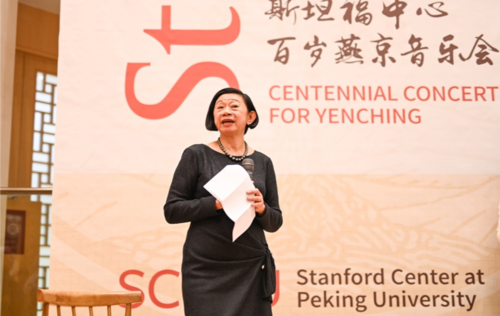
Jean C. Oi, the Lee Shau Kee Director of SCPKU
Jean C. Oi, the Lee Shau Kee Director of SCPKU, spoke about Yenching University as a model of collaboration and friendship between the US and China. She used the occasion of the 100 Anniversary of Yenching University to announce the opening of a new state-of-the-art conference room at SCPKU.
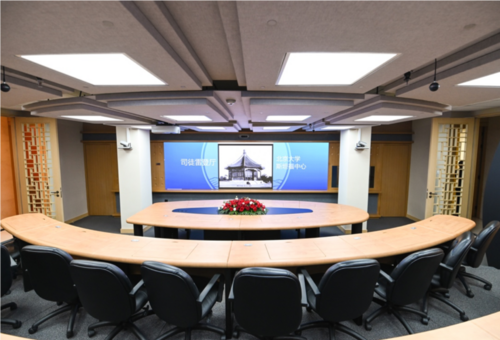
John Leighton Stuart Room allows state of the art, real time connectivity to over 250 classrooms, labs, conference facilities, and offices at Stanford University.
The room was made possible by a generous gift by Cheng Jiashu (Josh), Executive Director at SCPKU, and his wife, Xu Wan, who named the room in honor of the first Yenching University President, John Leighton Stuart. Oi in thanking Josh and his wife stated that the John Leighton Stuart Room (the Stuart Room) would greatly advance the efforts begun by Yenching University and Dr. John Leighton Stuart to further US-China relations. Dr. Stuart’s efforts in furthering US-China relations are legendary and remain an inspiration to this day. Josh Cheng and his wife have deep ties to Yenching University and to Stuart. Stuart personally recommended Xu Wan’s father, Xu Xianyu, when he graduated from Yenching University to study for a Ph.D. in mathematics in the United States in 1936. After receiving a doctorate in the United States, Dr. Xu returned to teach at Yenching University as a professor of mathematics. Xu Wan’s mother, Han Dechang, was a Yenching University music department graduate, and Josh Cheng’s mother and uncle all studied at Yenching University.
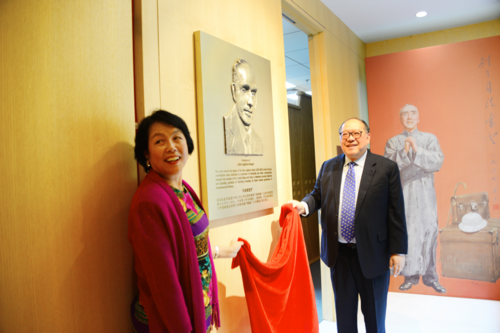
CHENG Jiashu (Josh) and his wife, Xu Wan, unveiling the relief of John Leighton Stuart, with the copy of Li Bin’s painting of Stuart in the background
Mr. Li Bin, eminent artist of Chinese modern history, provided a wall sized copy of his famous painting “Farewell, Leighton Stuart” (see picture above) to help celebrate the occasion.
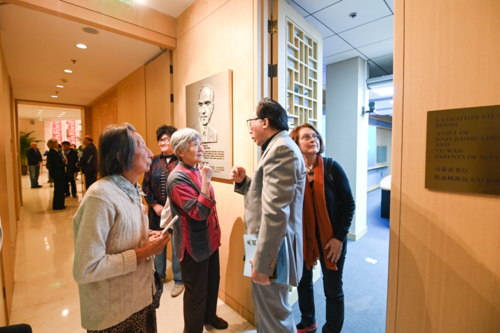
Artist Li Bin chatting with Professor Wu Qing, whose parents were faculty at Yenching University where President John Leighton Stuart attended their wedding
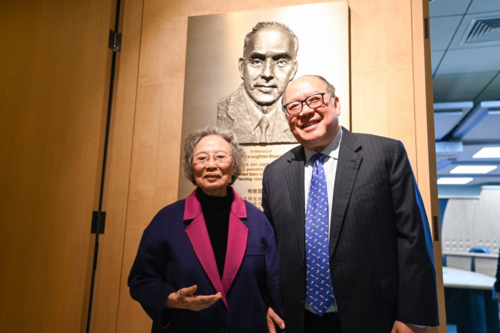
Cheng Jiashu (Josh) and He Liliang in front of John Leighton Stuart Room
Cheng Jiashu (Josh), in giving a brief history of Yenching University, noted the renewed attention Stuart has recently received from top leaders in China. He shows a clip of President XI Jinping at the G20 Summit in Hangzhou on September 4, 2016, when he identified John Leighton Stuart as one of the three historic bridge builders who helped to further establish the relationship and interaction between China and the world. President XI further added that “140 years ago, in June 1876, Mr. Stuart, who had served as US ambassador to China, was born in Hangzhou, in China. After living for more than 50 years in China, his ashes are placed in the Anxian Garden in the mid-levels of Hangzhou.”
After the ceremony and short presentation by Josh Cheng on the history of Yenching University, the audience was treated to a jubilant concert, performed by Zhao Kunyu, the Concert Master of the China National Symphony Orchestra, and an ensemble of leading young Chinese musicians.
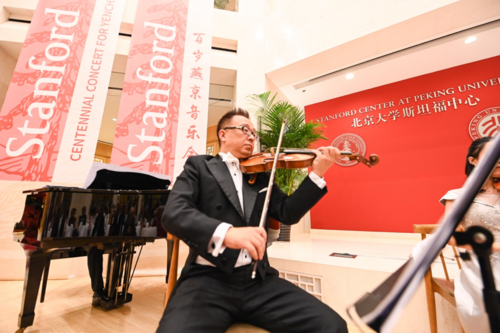
Zhao Kunyu, Concert Master of the China National Symphony Orchestra
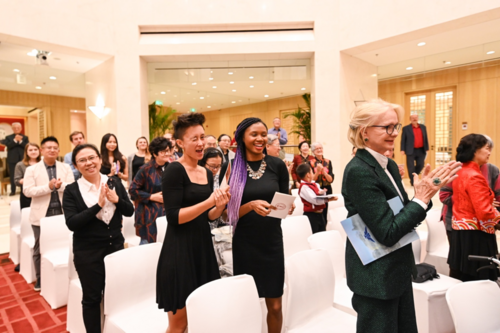
Listening to the concert and giving applause at the end of the evening





